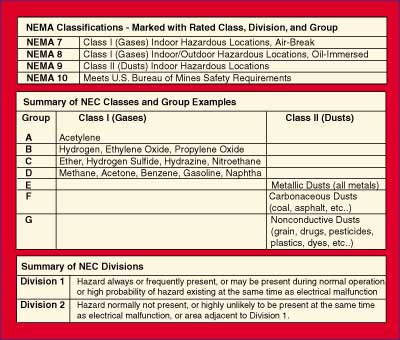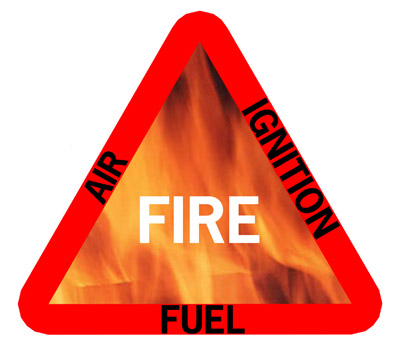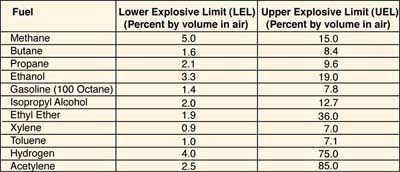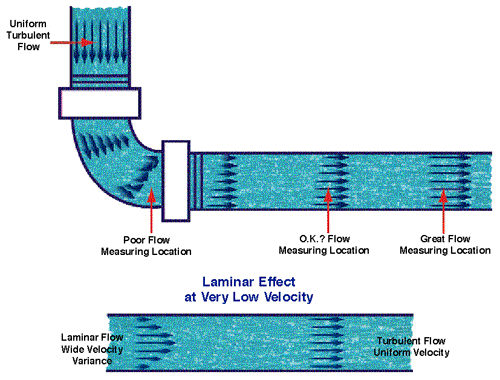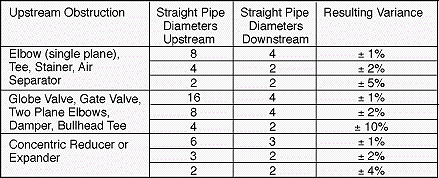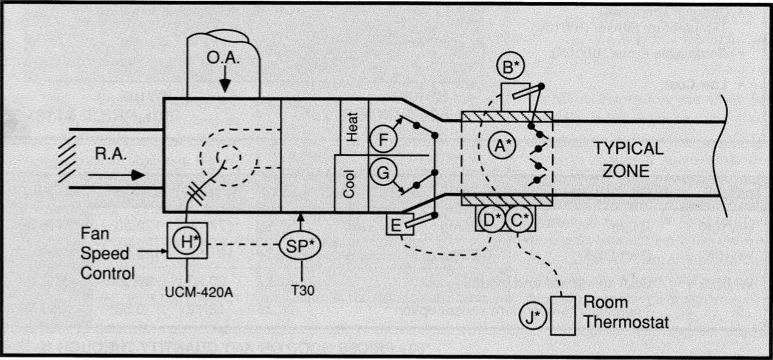Reprinted from Spring 2003 Insights
Not to be used as a life safety device – This phrase appears on a number of Kele catalog pages as a warning to customers that the particular product (usually a gas detector) is not to be relied upon to safeguard humans or animals from a particular hazard. It may, though, be part of a control system that helps prevent the formation of a hazardous environment under normal conditions when the product is properly applied and maintained. Even then, such devices, in most cases, cannot protect persons or animals that are intimate with the hazard.
Occasionally, a specification may insist upon a device that is listed or certified as a life safety device. However, there is no such listing or certification available, except by manufacturers of certain firefighting equipment and personal portable gas monitors. The only nationally recognized code that employs the term “life safety” is the Life Safety Code, and products are not specified in this code. Its official title is actually “NFPA 101, Safety to Life from Fires in Buildings.” There is no agency that certifies compliance with this code.
Some common products, which may be required to be applied as life safety devices, are classified into individual functional groups. Fire alarm equipment, including smoke detectors, is such a group. Boiler flame safety equipment is another group. UL, Factory Mutual, CSA, and other certifying agencies will list and label approved equipment for use in these specific categories. They are not listed and labeled as “life safety devices” but rather as “Fire Protection Signaling Equipment” or “Gas Flame Safety Equipment.” Again, it must be emphasized that there is no such certification as “Life Safety” unless it is being applied by a manufacturer to firefighting equipment or personal portable protective equipment. The Life Safety Code does not specify products; therefore, no product can claim compliance with it.
Even a gas sensor that is listed and labeled as a sensor by UL or another agency should never be used as a last line of defense for life. Considering the following logic will give a better appreciation for the underlying reasons why:
Time
Gas sensors have inherent response times that are significant. Even the fastest sensors cannot claim better than 30 seconds, and many refrigerant leak sensors may exceed 15 minutes in response to the presence of a gas. If a multi-zone sensor is considered, response time for any one zone can exceed even the 15-minute level. Basically, if a person or animal is in the machine room when a catastrophic release of refrigerant occurs, no sensor will save he/she or it from injury or death.
Power
Gas sensors are powered by electricity, and there is rarely, if ever, a backup power system applied to them. If the electricity goes out, the sensor cannot function.
Life Scan
The active portions of gas sensors have limited lives. If not properly maintained, the sensor cannot function.
Location
Even if a gas sensor has an uninterruptible power supply and is properly maintained, it can only measure gas concentration at its specific location. At the source of the leak, the concentration of the offending gas will be much higher. A person or animal nearer to the source of the contaminant may be exposed to a lethal dose; however, the level may never rise to the personal exposure limit at the sensor location if the prevailing airflow is toward the source.
Absolute Protection
Absolute protection from inhalation hazards can only be provided by a source of known-to-be-clean air. Self-contained breathing apparatus (SCBA) and remote air delivered by compressors and tubing are options that can actually safeguard a life from a toxic gas. In areas where such exposure is likely, other codes require that such clean air sources be available.
To detect combustible or toxic mixtures at very low levels in order to protect lives in confined spaces or other potentially hazardous atmospheres, personal battery-operated monitors that perform well are available. These can also overcome some of the shortfalls of fixed gas monitoring, as long as they are regularly tested and maintained.
In conclusion, fixed gas detectors may be used as part of a control system that is designed to prevent a hazardous situation from occurring. These sensors may be used to signal a control system to begin ventilating a potential hazard or one that has already occurred. However, none of these sensors can be relied upon absolutely to prevent health effects due to inhalation or combustion in a space that is already occupied. Their reaction time, level of maintenance, source of power, and proximity to the individuals in question cannot be guaranteed.

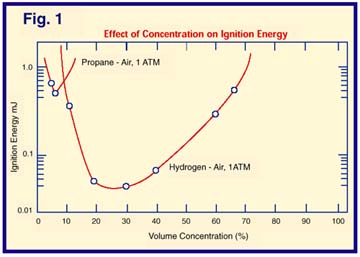
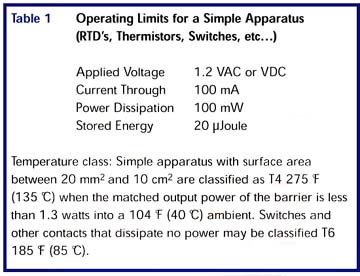 So, if we have an RTD and an intrinsically safe temperature transmitter in a hazardous location, can we wire them up to our controller and power supply in the safe area and turn them on? Not yet! Three more steps are needed first. While the devices in the hazardous area cannot ignite the gas mixture on their own, the controller and power supply in the safe area may each be capable of transmitting enough energy through the wires into the hazardous area to do the job anyway! An
So, if we have an RTD and an intrinsically safe temperature transmitter in a hazardous location, can we wire them up to our controller and power supply in the safe area and turn them on? Not yet! Three more steps are needed first. While the devices in the hazardous area cannot ignite the gas mixture on their own, the controller and power supply in the safe area may each be capable of transmitting enough energy through the wires into the hazardous area to do the job anyway! An 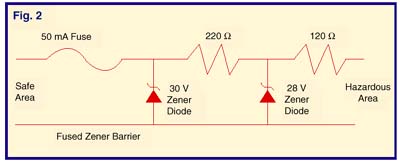 Figure 2 illustrates a simple zener diode barrier circuit. A high voltage at the safe side terminals will cause the zener diode to draw a high current and blow the input fuse. The series resistors limit the current to the hazardous side. Barriers are also rated for how much capacitance and inductance are allowed on the hazardous side.
Figure 2 illustrates a simple zener diode barrier circuit. A high voltage at the safe side terminals will cause the zener diode to draw a high current and blow the input fuse. The series resistors limit the current to the hazardous side. Barriers are also rated for how much capacitance and inductance are allowed on the hazardous side.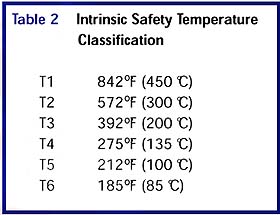 The final factor to consider is grounding. What good is all this built-in electronic safety if a nearby lightning strike raises the ground potential a couple of thousand volts above the potential of the cable shield in our hazardous area? The resulting arc from the shield to ground can be every bit as effective as a butane lighter in touching off an explosion, and we needn’t have bothered with using intrinsically safe products. An intrinsic safety ground, bonded to the earth ground, is the last essential link that makes the system work. Normally provided at the barrier location, it keeps the cable shields at or near the same potential as the earth, even as that value moves around during storms.
The final factor to consider is grounding. What good is all this built-in electronic safety if a nearby lightning strike raises the ground potential a couple of thousand volts above the potential of the cable shield in our hazardous area? The resulting arc from the shield to ground can be every bit as effective as a butane lighter in touching off an explosion, and we needn’t have bothered with using intrinsically safe products. An intrinsic safety ground, bonded to the earth ground, is the last essential link that makes the system work. Normally provided at the barrier location, it keeps the cable shields at or near the same potential as the earth, even as that value moves around during storms.

